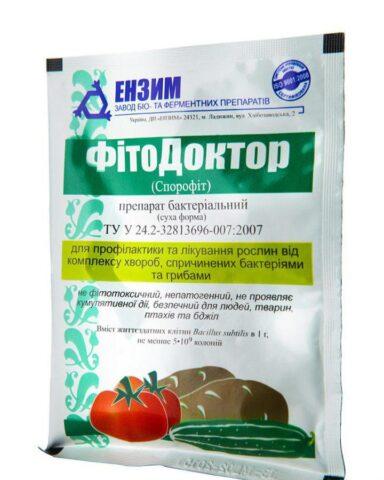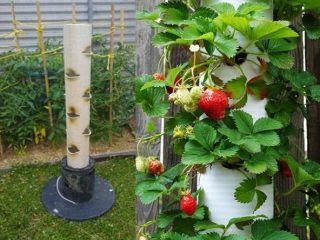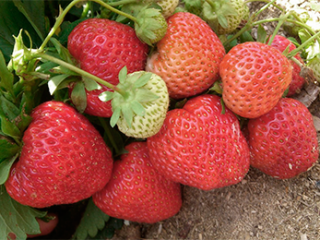Content
Verticillium wilt of strawberries can lead to the death of the entire crop. In the early stages, the disease is treatable, but it is important to recognize its symptoms in time.
What kind of disease is it and where does it come from?
Verticillium wilt, verticillium wilt, or wilt, is a disease caused by fungi of the genus Verticillium dahliae. It affects the vascular system of strawberries and usually develops on the roots of the plant, so it is quite difficult to notice the disease in time. It is highly resistant to adverse conditions and shows almost no symptoms in the early stages.
The causative agent of the disease most often affects strawberries growing on sandy soil with an acidity level of about 6-7 pH. The development of verticillium is facilitated by lack of light and poor ventilation of beds, high humidity and sharp changes in day and night temperatures.
Infection of strawberries usually occurs through low-quality planting material that has not undergone antifungal treatment.Spores can enter the garden bed through dirty garden tools; sometimes verticillium spreads to the crop from neighboring plants that are susceptible to the disease. The likelihood of infection increases in the presence of weeds - especially nightshade, amaranth and madder. Fungal spores overwinter in plant debris, so verticillium often appears on neglected plantations from which fallen leaves and fallen fruits are not removed.

Verticillium actively develops at a temperature of 16-20 ° C
The causative agent of the disease penetrates the strawberry tissue if its roots are weakened or damaged. The first symptoms of the disease may appear only 2-3 years after infection.
Symptoms of the lesion
Verticillium in strawberry beds can be recognized by its characteristic symptoms. These include:
- drying of the leaves, which begins at the bottom and gradually spreads upward through the bushes;
- redness of the petioles or the appearance of brown and bluish stripes and spots on them;
- crushing, drying and rotting of berries;
- slowing down the development of strawberries;
- twisting leaves in a spiral;
- death of the mustache.
When severely infected with verticillium, strawberry bushes simply lie down on the ground and finally die. It is important to inspect the plantings as often as possible in order to notice the disease in the early stages of development.
How and with what to treat verticillium wilt of strawberries
Preparations for verticillium wilt of strawberries can be divided into several groups.In case of serious damage to the bushes, it is recommended to use industrial potent products; for mild symptoms, homemade solutions often help.
Fungicides
Antifungal drugs help well with moderate and severe damage to beds by verticillium. There are several particularly effective and inexpensive means.
Bordeaux liquid
The fungicidal preparation is a mixture of lime and copper sulfate. You can prepare the solution yourself according to the following scheme:
- Dilute 300 g of copper sulfate in 1 liter of hot water and stir thoroughly.
- Add cold liquid to a volume of 5 liters.
- Pour 2 liters of water into a bucket and add 400 g of quicklime.
- Stir and add cold liquid again to 5 liters.
- Combine the resulting milk of lime and copper sulfate with each other.
The finished 3% solution should have a bright blue color and no flakes. The product is filtered through folded gauze, after which it is poured into a spray bottle and sprayed on the strawberry plantings.

During the season, it is necessary to perform several sprays against verticillium at intervals of two weeks.
Maksim
The fungicidal agent is available in ampoules, each of which contains 2 ml of the active substance. To prepare the solution, you need to dilute the drug in 2 liters of water and mix.
Strawberries are sprayed or watered at the root from early spring until the start of flowering. One bush should require 100 ml of the drug.

The fungicidal drug Maxim is not dangerous to humans and does not have a negative effect on strawberry yields
Fundazol
One of the best antifungal agents for verticillium is Fundazol, which effectively suppresses the vital activity of the causative agent of the disease.To prepare a working solution, 10 g of the drug is diluted in 10 liters of water. Use a spraying agent, the consumption rate is 10 l per 10 m2. Strawberries must be processed before flowering so as not to disrupt pollination processes.

Fundazol is a toxic drug, so you need to work with it in a respirator and gloves
Biological products
Biological products are in demand because they do not lead to the accumulation of toxic substances in the soil and do not pose a danger to humans. Such products contain beneficial fungi that inhibit the causative agent of verticillium and bring a quick effect in the early stages of the disease.
Trichodermin
The biological preparation is used both for the prevention of verticillium and for its treatment. To prepare the mixture for spraying, you need to dissolve 200 ml of the finished product in 10 liters of water. In addition, Trichodermin is used for soil treatment - every 1 m2 spill 30 ml of the preparation into the soil.

Trichodermin can be used for strawberry verticillium at any stage of the growing season.
Phytocid-r
The biofungicidal drug is intended for the treatment of rot and fungal diseases, including verticillium. The solution is prepared as follows: 10 ml of the product is diluted in a bucket of water.
The resulting liquid should be enough to process 100 strawberry bushes. The solution is used to water the beds; the procedure is carried out in cloudy weather or in the evening.

Phytocid-r not only eliminates verticillium, but also serves as a complex mineral supplement for strawberries
Phytodoctor
The universal biological product is used to treat vegetable and berry crops against fungal diseases.To treat strawberries with verticillium, you need to dilute 30 g of the product in 10 liters of water and leave in a dark place for two hours. The prepared solution is used for irrigation.

The Phytodoctor solution must be used within three hours after preparation.
Folk remedies
In case of mild verticillium infection, home remedies can be used to treat strawberries. Their advantages include high safety and efficiency.
Soap-salt solution
For verticillium in the early stages, a solution of laundry soap and salt has a good effect. The drug is prepared as follows:
- The soap bar is rubbed on a coarse grater.
- Dissolve 40 g of the resulting shavings in a bucket of water.
- Add 30 g of table salt and mix thoroughly.
The prepared preparation is generously sprayed onto the plantings. It is advisable to repeat the treatment several times with an interval of 1-2 weeks.

Soap makes the fungicidal solution sticky and helps form a protective film on the strawberry bushes.
Solution of iodine and soda
An iodine-soda solution has a good antifungal and antiseptic effect. They do it according to this scheme:
- Stir 30 g of baking soda in a bucket of water.
- Add 5 ml of ordinary iodine 5% to the solution.
- Bring the product to a homogeneous state.
The resulting preparation is poured into a spray bottle and the strawberries are treated so that the solution gets on both the leaves of the plant and the soil under the bushes.

Iodine can burn strawberry leaves, so it must be dosed very carefully
Potassium permangantsovka
Verticillium wilt disease of strawberries can be eliminated using potassium permanganate.For treatment, prepare a simple solution - potassium permanganate crystals are stirred in a bucket of water until the liquid turns light pink. The resulting product is used to water the plantings 3-4 times in a row until the symptoms of the disease are eliminated.

Iodine can burn strawberry leaves, so it must be dosed very carefully
Agrotechnical control methods
Proper agricultural technology when growing strawberries helps, in principle, to avoid verticillium infestation of the beds. When caring for a crop, you must:
- Maintain crop rotation. Every 3-5 years, the beds with strawberries need to be moved to a new place, and the previous plot should be given over to other crops - carrots, spinach, peas or garlic.
- Use for growing varieties with good immunity to Verticillium wilt. It is especially important to pay attention to the choice of seedlings if conditions on the site are favorable for the development of fungal diseases.
- Disinfect strawberry seedlings and soil before planting. To eliminate possible fungal spores and microorganisms, fungicidal preparations and a light solution of potassium permanganate are used.
- Remove plant debris from the site. The causative agent of verticillium survives the winter in the upper layers of the soil and in the rotting remains of leaves and berries. Before the onset of cold weather, the plantation must be thoroughly cleaned of debris.
As part of the agricultural control of verticillium, heavily affected strawberry bushes must be dug up and burned. This will protect neighboring healthy plants from wilting.
Prevention measures
Strawberry verticillium is treatable, but the disease is quite difficult to cope with.Compliance with preventive measures helps, in principle, to avoid being affected by the disease. When growing strawberries you need:
- plant bushes only on fertile and well-drained soil;
- do not allow the soil under the strawberries to dry out and become waterlogged;
- do not place the bushes too close to each other to avoid thickening;
- do not overfeed strawberries with nitrogen;
- regularly inspect the plantings in order to recognize wilt symptoms in time.
It is not recommended to plant strawberries on the site in places where tomatoes, potatoes, beets, peppers or melons, as well as roses, chrysanthemums, phlox and mint previously grew. All of these crops are highly susceptible to verticillium and often leave behind contaminated soil.
Strawberry varieties resistant to Verticillium wilt
Strawberry verticillium disease rarely affects varieties with good immunity. Several varieties can be particularly distinguished:
- Bounty. This mid-ripening dessert variety produces large crimson-red berries. It is characterized by high productivity and rarely suffers from verticillium and gray rot.
You can grow Bounty strawberries in the middle zone and in the Urals
- Gourmand. A relatively young strawberry variety, bred in 2000, produces fruits weighing up to 34 g each. It has good immunity to wilt and increased winter hardiness.
Strawberry Gourmand does not degenerate until the age of ten
- Favorite. Remontant strawberries begin bearing fruit in June and continue until September. Brings sweet berries weighing up to 25 g.
Strawberry Favorite gives about 1 kg of yield per bush
When growing strawberries with high immunity to verticillium, it is necessary, one way or another, to follow the rules of agricultural technology and preventive measures.Hardy varieties suffer from fungus less often, but can still get sick under unfavorable conditions.
Conclusion
Verticillium wilt of strawberries develops slowly and manifests noticeable symptoms quite late. It is necessary to pay attention to the prevention of fungus and inspection of the beds in order to protect the plantings from the disease or begin its treatment in time.











